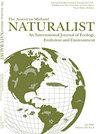密歇根州基威诺半岛南部糖槭(Acer saccharum)幼苗库对风暴扰动和单株选择收获的响应
IF 0.6
4区 环境科学与生态学
Q4 Agricultural and Biological Sciences
引用次数: 0
摘要
摘要本案例研究旨在填补关于自然风干扰如何影响单一树种采伐方法管理的北方阔叶林林分和幼苗库多样性的关键知识空白。在密歇根州上半岛的国家管理土地上,当代木材采伐采用单树选择采伐方法,以促进以糖枫(Acer saccharum)为主的次生林的更复杂的年龄结构。然而,人们担心单株采伐可能会导致幼苗组成多样性降低,因为小散居林隙的弱光条件将不耐荫的树种排除在林隙再生之外。2016年7月,风速超过145公里/小时(90英里/小时)的强雷暴导致基威诺半岛南部第二生长型北方混合阔叶林大面积树木倒塌,树冠间隙产生。我们测量了14个林隙的林下树木死亡率和林下幼苗更新的物种组成,这些林隙是在有和没有单一树木选择收获的林分中形成的。风暴缺口的大小从125到1100平方米不等。美国椴木(美洲椴木)被风吹得不成比例。在所有风暴间隙均释放出强劲的幼苗再生,无论之前的单株选择收获情况如何,糖枫的平均幼苗丰度均超过75%。糖枫和铁木(Ostrya virginia)占树苗丰度的80%。结果表明,北方阔叶树混交林的单树选择不会加剧,而是模拟了未管理的第二生长点上密集糖枫的再生。本文章由计算机程序翻译,如有差异,请以英文原文为准。
Sugar maple (Acer saccharum) Seedling Bank Response to Storm Disturbance and Single Tree Selection Harvest in the Southern Keweenaw Peninsula, Michigan
Abstract. This case study seeks to fill a critical knowledge gap regarding how natural wind disturbance affects stand and seedling bank diversity in mixed northern hardwood forests managed by single tree selection harvest methods. Contemporary timber harvests on state managed lands in Michigan's Upper Peninsula employ single tree selection cutting methods to promote more complex age structure in second growth stands dominated by sugar maple (Acer saccharum). However, concern exists that single tree selection harvest may result in lowered compositional diversity of seedlings as the low light conditions of small dispersed gaps exclude less shade tolerant species from gap regeneration. In July 2016 severe thunderstorms with winds in excess of 145 km/h (90 mph) caused extensive tree fall and canopy gap creation in second growth mixed northern hardwood forests in the southern Keweenaw Peninsula. We measured the species composition of overstory tree mortality and understory seedling regeneration in 14 storm gaps created in stands with and without previous single tree selection harvest. Storm gaps ranged in size from 125 to 1100 m2. American basswood (Tilia americana) was disproportionately wind-thrown. Robust seedling regeneration was released in all storm gaps, with sugar maple comprising more than 75% of mean seedling abundance, regardless of previous single tree selection harvest. Sugar maple and ironwood (Ostrya virginiana) comprised 80% of sapling abundance. Results indicate single tree selection of mixed northern hardwood stands does not exacerbate, but rather emulates, dense sugar maple regeneration found on unmanaged second growth sites.
求助全文
通过发布文献求助,成功后即可免费获取论文全文。
去求助
来源期刊

American Midland Naturalist
环境科学-生态学
CiteScore
1.20
自引率
0.00%
发文量
38
审稿时长
18-36 weeks
期刊介绍:
The American Midland Naturalist has been published for 90 years by the University of Notre Dame. The connotations of Midland and Naturalist have broadened and its geographic coverage now includes North America with occasional articles from other continents. The old image of naturalist has changed and the journal publishes what Charles Elton aptly termed "scientific natural history" including field and experimental biology. Its significance and breadth of coverage are evident in that the American Midland Naturalist is among the most frequently cited journals in publications on ecology, mammalogy, herpetology, ornithology, ichthyology, parasitology, aquatic and invertebrate biology and other biological disciplines.
 求助内容:
求助内容: 应助结果提醒方式:
应助结果提醒方式:


